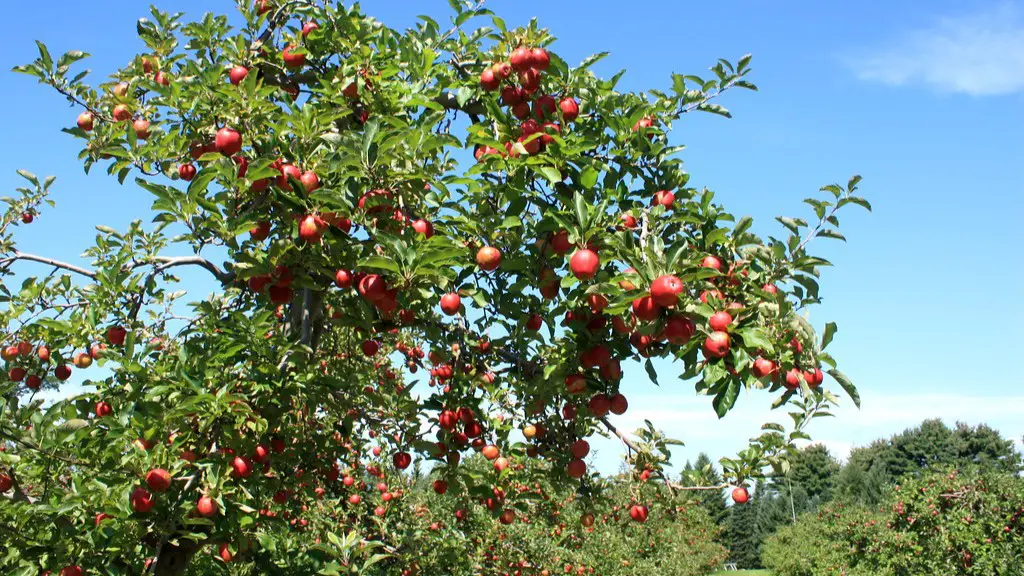Pruning is a key part of the lemon tree care routine. It is crucial for growth, production and overall health of the tree. To answer the question “When is the right time to prune a lemon tree”, it depends on both the age and stage of growth of the tree. Generally, pruning should begin when a lemon tree is young, and when it has fully matured, pruning ceases.
Youthful Trees
Young lemon tree’s should be pruned when the branches are still young and flexible. Pruning for any tree involves the removal of dead or dying branches, overcrowding of branches, and the removal of horizontal branches so the lemon tree develops a strong central trunk. During the first few growing seasons, aim to shape the tree and remove any branches which are crossing over one another or are becoming too close together.
Established Trees
For older lemon trees, pruning should focus on removing the dead wood, removing diseased branches if seen, and trimming any crossed branches growing up against the main trunk. To maintain a desirable shape, keep a roughly pyramid shape with open space in the middle of the tree. If a tree is left unpruned, it will become less fruitful and less vigorous. Pruning also helps to prevent pests and disease from taking hold, as it improves circulation of air and light around the branches and reduces humidity.
Seasonal Pruning
Though pruning a lemon tree is advisable all-year-round, the best time to prune is late winter or early spring before the buds appear on the tree. It is important to be selective and target the branches that need pruning, as any incorrect pruning runs the risk of damaging other parts of the tree. During the pruning process, always use sharp shears so that the cuts are clean and quick, as this will help prevent the risk of disease. Aim to prune around a third of the length of the branch, but never cut the branch at the junction of the trunk if it is full grown as this may damage the tree.
Pruning Fruits
If a lemon tree is flowering or fruiting, care should be taken when pruning around the flowers or fruits. Avoid pruning the tree during fruiting as this can lead to fruit drop. Too much pruning can also lessen the size of the lemon crop, so it’s important to only prune after the fruit is harvested. This will also ensure the tree is ready to receive the most amount of sunlight and air circulation it needs to restore its energy ahead of flowering again.
Late Pruning
If a lemon tree is left to become too overgrown, even a light late-winter pruning can leave the tree weak, potentially damaging it until the end of the growing season. To provide the needed care, pruning should be done gradually over a few years to allow the tree to adjust to the new shape and size. Regularly pruning your lemon tree will help you to maintain the health of both itself and the yield of juicy lemons.
Spreading of Disease
An important aspect of lemon tree pruning is to be aware of diseased branches so as to not spread any disease present. It’s best practice to sanitize the pruning tools once done, as otherwise it could spread any diseases across the tree. Any tools which are being used for pruning should also not be used for other plants as this could spread any diseases and fungi, so it’s important to maintain good hygiene.
Formative Pruning
Formative pruning helps the lemon tree to develop a strong and healthy structure. Start pruning when the tree is young and the branches are still flexible and able to be shaped. This will help the tree to be less prone to disease during maturity and produce more fruit. Pruning also encourages an abundance of berries and ensure the tree is strong enough to maintain its shape over the years.
Overwintering
If you live in a climate where temperatures dip below freezing for part of the year, take extra precautions when it comes to pruning your lemon tree. Pruning encourages the growth of lush new branches, but those new branches can be easily damaged by frost. If the temperature drops to freezing or below, hold off on pruning until the temperatures warm up again.
Fungal Diseases
Fungal diseases are common in citrus orchard trees, and pruning your lemon tree is an essential part of controlling these diseases. Pruning away disease will not only help to keep your lemon tree healthy, but it will also ensure the disease doesn’t spread to other trees and plants nearby. Pruning can also help to increase airflow to help reduce excess moisture around the branches and foliage, which is important in reducing the risk of fungal diseases.
Irrigation
To keep a lemon tree healthy, regular irrigation is essential. Pruning can help to improve soil drainage which allows a lemon tree to absorb more water and keep the soil evenly moist. This will also encourage healthy and vigorous root growth, leading to a larger and more productive lemon tree. A healthy tree is also less susceptible to various forms of infection or disease.
Training Techniques
Learning the appropriate pruning techniques for your citrus tree is essential. Identifying which parts of the tree are old, where new growth should be encouraged and how to prune away unwanted branches or correcting the shaping is important. Having the knowledge and experience in this kit will help to ensure your lemon tree will thrive year after year.

